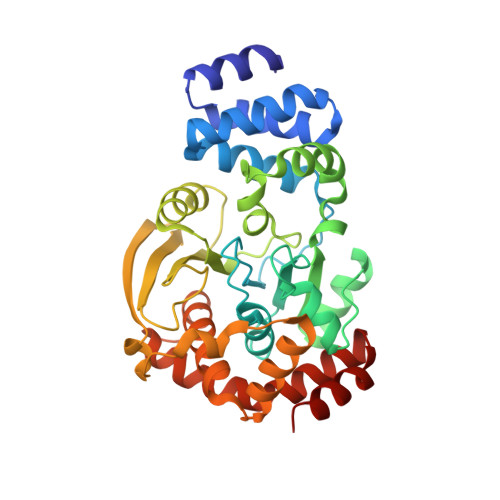Structural and mutational analysis of substrate complexation by anthranilate phosphoribosyltransferase from Sulfolobus solfataricus.
Marino, M., Deuss, M., Svergun, D.I., Konarev, P.V., Sterner, R., Mayans, O.(2006) J Biological Chem 281: 21410-21421
- PubMed: 16714288
- DOI: https://doi.org/10.1074/jbc.M601403200
- Primary Citation of Related Structures:
1ZXY, 1ZYK, 2GVQ - PubMed Abstract:
The metabolic synthesis and degradation of essential nucleotide compounds are primarily carried out by phosphoribosyltransferases (PRT) and nucleoside phosphorylases (NP), respectively. Despite the resemblance of their reactions, five classes of PRTs and NPs exist, where anthranilate PRT (AnPRT) constitutes the only evolutionary link between synthesis and degradation processes. We have characterized the active site of dimeric AnPRT from Sulfolobus solfataricus by elucidating crystal structures of the wild-type enzyme complexed to its two natural substrates anthranilate and 5-phosphoribosyl-1-pyrophosphate/Mg(2+). These bind into two different domains within each protomer and are brought together during catalysis by rotational domain motions as shown by small angle x-ray scattering data. Steady-state kinetics of mutated AnPRT variants address the role of active site residues in binding and catalysis. Results allow the comparative analysis of PRT and pyrimidine NP families and expose related structural motifs involved in nucleotide/nucleoside recognition by these enzyme families.
- Division of Structural Biology, Biozentrum, University of Basel, Klingelbergstrasse 70, CH-4056 Basel, Switzerland.
Organizational Affiliation:


















